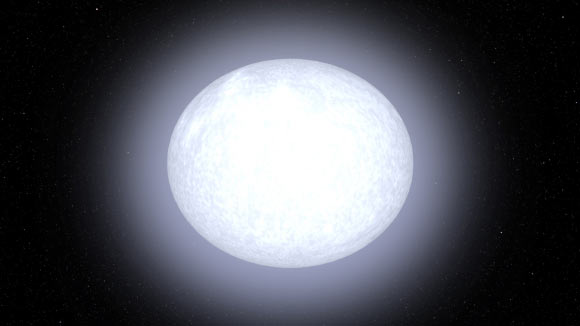Astronomers using NASA’s Transiting Exoplanet Survey Satellite (TESS) have detected pulsation patterns in the so-called Delta Scuti stars, a large group of pulsating stars of intermediate mass. The discovery will revolutionize astronomers’ ability to study details like the ages, sizes and compositions of these stars.
Delta Scuti stars are young pulsating stars with masses between 1.5 and 2.5 solar masses. They’re named after Delta Scuti, a star visible to the human eye in the southern constellation of Scutum that was first identified as variable in 1900.
Since then, astronomers have identified thousands more like Delta Scuti, many with NASA’s Kepler Space Telescope.
But scientists have had trouble interpreting Delta Scuti pulsations. These stars generally rotate once or twice a day, at least a dozen times faster than the Sun. The rapid rotation flattens the stars at their poles and jumbles the pulsation patterns, making them more complicated and difficult to decipher.
To determine if order exists in Delta Scuti stars’ apparently chaotic pulsations, astronomers needed to observe a large set of stars multiple times with rapid sampling.
“Delta Scuti stars clearly pulsate in interesting ways, but the patterns of those pulsations have so far defied understanding,” University of Sydney’s Professor Tim Bedding, lead author of the study.
“To use a musical analogy, many stars pulsate along simple chords, but Delta Scuti stars are complex, with notes that seem to be jumbled. TESS has shown us that’s not true for all of them.”
Professor Bedding and his colleagues found a subset of Delta Scuti stars with regular pulsation patterns in data from TESS and Kepler.
The astronomers then conducted follow-up observations with ground-based telescopes, including one at the W.M. Keck Observatory in Hawaii and two in the global Las Cumbres Observatory network.
In total, they identified a batch of 60 Delta Scuti stars with clear patterns.
“This really is a breakthrough. Now we have a regular series of pulsations for these stars that we can understand and compare with models,” said co-author Dr. Simon Murphy, a postdoctoral researcher at the University of Sydney.
“It’s going to allow us to measure these stars using asteroseismology in a way that we’ve never been able to do. But it’s also shown us that this is just a stepping-stone in our understanding of Delta Scuti stars.”
Pulsations in the well-behaved Delta Scuti group fall into two major categories, both caused by energy being stored and released in the star.
Some occur as the whole star expands and contracts symmetrically. Others occur as opposite hemispheres alternatively expand and contract.
The researchers inferred the alterations by studying each star’s fluctuations in brightness.
The data have already helped settle a debate over the age of one star, called HD 31901, a member of a recently discovered stream of stars orbiting within our Milky Way Galaxy.
Astronomers placed the age of the overall stream at 1 billion years, based on the age of a red giant they suspected belonged to the same group. A later estimate, based on the rotation periods of other members of the stellar stream, suggested an age of only about 120 million years.
The scientists used the TESS observations to create an asteroseismic model of HD 31901 that supports the younger age.
They think their set of 60 stars has clear patterns because they’re younger than other Delta Scuti stars, having only recently settled into producing all of their energy through nuclear fusion in their cores.
The pulsations occur more rapidly in the fledgling stars. As the stars age, the frequency of the pulsations slows, and they become jumbled with other signals.
Another factor may be TESS’s viewing angle. Theoretical calculations predict that a spinning star’s pulsation patterns should be simpler when its rotational pole faces us instead of its equator.
The team’s TESS data set included around 1,000 Delta Scuti stars, which means that some of them, by chance, must be viewed close to pole-on.
Scientists will continue to develop their models as TESS begins taking full images every 10 minutes instead of every half hour in July 2020.
“The new observing strategy will help capture the pulsations of even more Delta Scuti stars,” Professor Bedding said.
“We knew when we designed TESS that, in addition to finding many exciting new exoplanets, the satellite would also advance the field of asteroseismology,” said TESS principal investigator Dr. George Ricker, an astronomer at MIT’s Kavli Institute for Astrophysics and Space Research.
“The mission has already found a new type of star that pulsates on one side only and has unearthed new facts about well-known stars. As we complete the initial two-year mission and commence the extended mission, we’re looking forward to a wealth of new stellar discoveries TESS will make.”
The findings appear in the journal Nature.
_____
T.R. Bedding et al. 2020. Very regular high-frequency pulsation modes in young intermediate-mass stars. Nature 581, 147-151; doi: 10.1038/s41586-020-2226-8
This article is based on text provided by the National Aeronautics and Space Administration.








